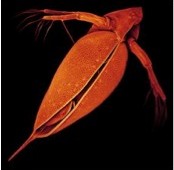UCLA team makes isobutanol from cellulose on ScienceDaily
While there were many possible microbial candidates, the research team ultimately chose Clostridium cellulolyticum, which was originally isolated from decayed grass. The researchers noted that their strategy exploits the host’s natural cellulolytic activity and the amino acid biosynthetic pathway and diverts its intermediates to produce higher alcohol than ethanol. The researchers also noted that Clostridium… [Read More]
